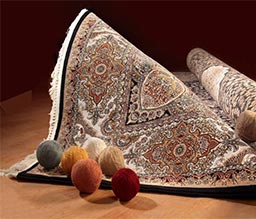
What are Kilim Rug?
What are Kilim Rug?
Carpets, aka carpet rugs, are a very popular flat deco-woven carpet that has been produced since ancient times in the Middle East from the Balkans in the West to Pakistan in the East.
Carpets have been identified as old as from 4th or 5th century China. The term kilim is Turkish and originates from the Persian ‘gelim’, meaning to spread roughly.
Carpet rugs are created with a tight interweaving of warps and wefts to produce a flat carpet without a pile. The on display weft strands give the rugs their color and design, and are usually made of wool. The hidden warp strands, visible only at the end of the design, emerge as a bunched fringe, and are usually made of either wool or cotton. One of the attributes of the Kilim, which makes them much beloved by collectors, is creating a vertical slit between different color areas, which makes for very sharply defined designs that emphasize the geometry of the design.
warp and wefts slit woven kilim rug
Kids have been made for centuries with basic tools including a loom, a beating comb, a shuttle and a knife or scissors. Naturally, dyes have been masterfully created from plants, animals and minerals for hundreds of years until the introduction of synthetic dyes in the mid-19th century. Many experts believe that natural dyes appear softer and more muted, and that the colors of natural dyes blend together more harmoniously due to the more complex collection of wavelengths perceived by the human eye.
Soft and thin carpet rugs are often used as wall hangings, and ornamental pillow cases. There is a rich symbolic language used in the designs of kilims, with each kilim producing region having traditional patterns and motifs associated with it.
Though kilims are usually cheaper than pile rugs, they have become increasingly popular in recent years. Their indigenous motifs and authentic hand weaving and dyeing of the yarn have transcended trends with a universal appetite that sees them exported all over the world.
Weaving technique
Kilims are produced by tightly interweaving the warp and weft strands of the weave to produce a flat surface with no pile. Kilim weaves are tapestry weaves, technically weft-faced plain weaves, that is, the horizontal weft strands are pulled tightly downward so that they hide the vertical warp strands.
When the end of a color boundary is reached, the weft yarn is wound back from the boundary point. Thus, if the boundary of a field is a straight vertical line, a vertical slit forms between the two different color areas where they meet. For this reason, most kilims can be classed as “slit woven” textiles. The slits are beloved by collectors, as they produce very sharp-etched designs, emphasizing the geometry of the weave. Weaving strategies for avoiding slit formation, such as interlocking, produce a more blurred design image.
The weft strands, which carry the visible design and color, are almost always wool, whereas the hidden warp strands can be either wool or cotton. The warp strands are only visible at the ends, where they emerge as the fringe. This fringe is usually tied in bunches, to ensure against loosening or unraveling of the weave.
The Differences Between Traditional & Kilim Rugs
Traditional rugs, by contrast, do have a pile. This means they are thicker and heavier. They are not quite as delicate and are more luxurious. These types of carpets and rugs are still made using traditional techniques.
Of course, these days it’s possible to get traditional rugs that have those wonderful traditional designs and motifs but don’t carry the price tag of hand-
woven rugs because they are made using machines rather than by hand. This means all budgets are covered when it comes to traditional rugs!
A difference between the Kilim style of rugs and traditional rugs is that Kilims can have a wider range of uses compared to rugs. Due to the way that Kilims are woven, they can also be crafted into other things rather than just a rug. For example, items such as room dividers or even Chuval bags as seen above!




